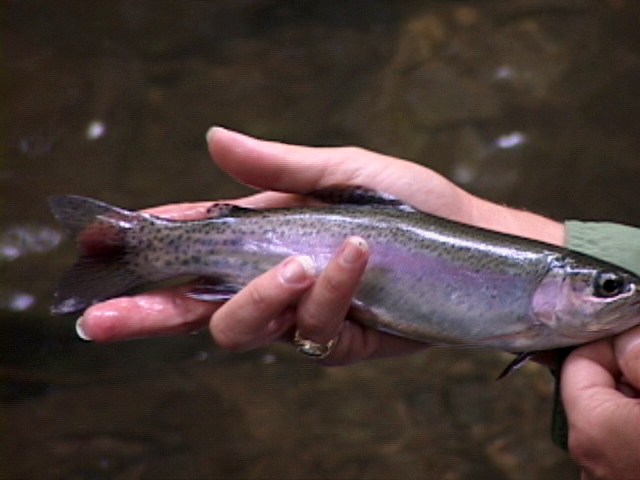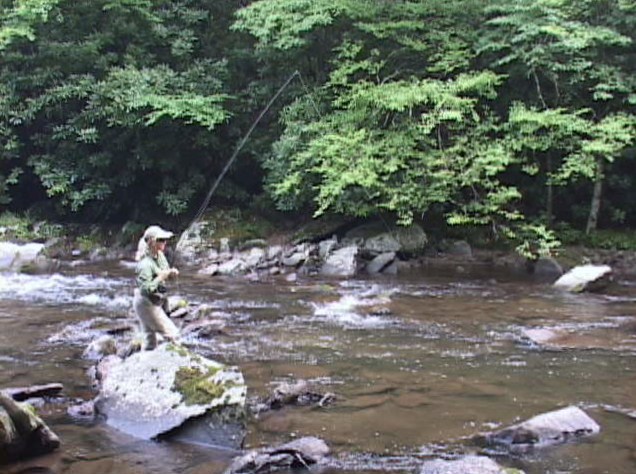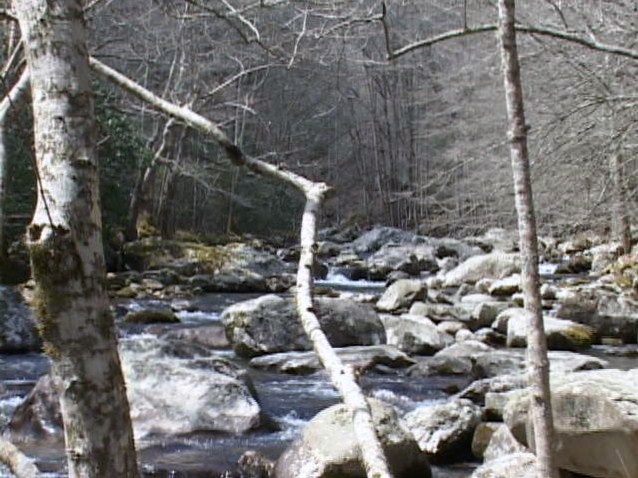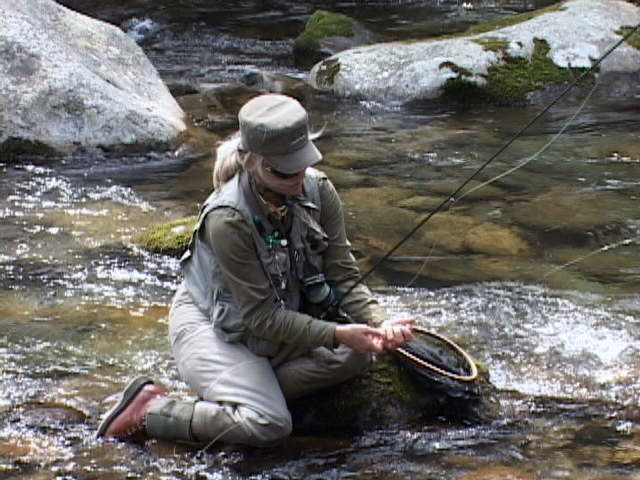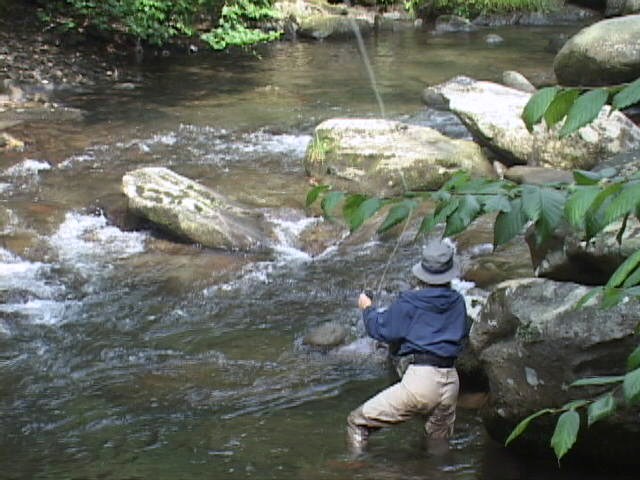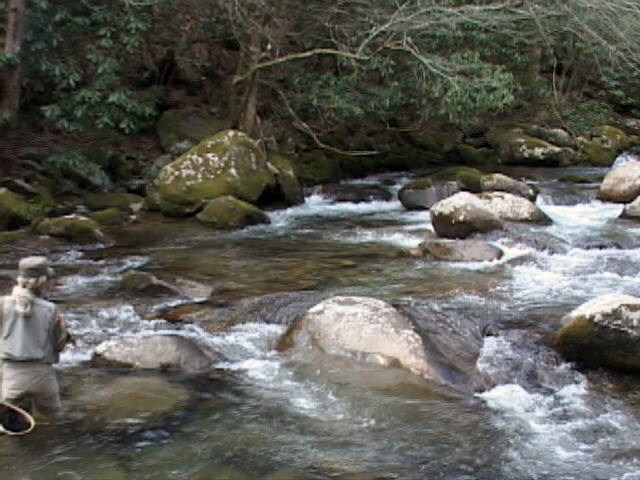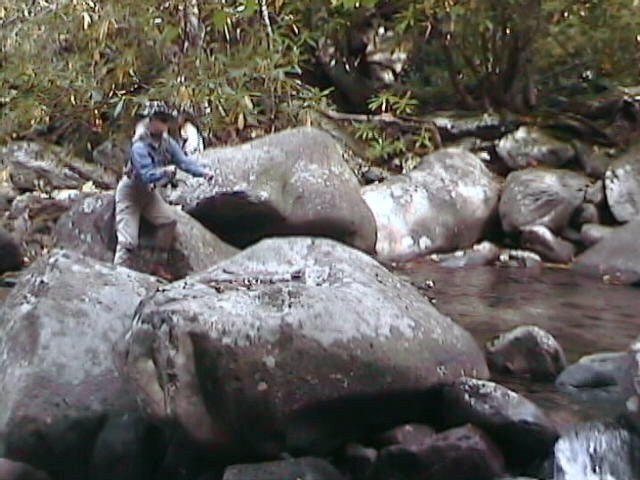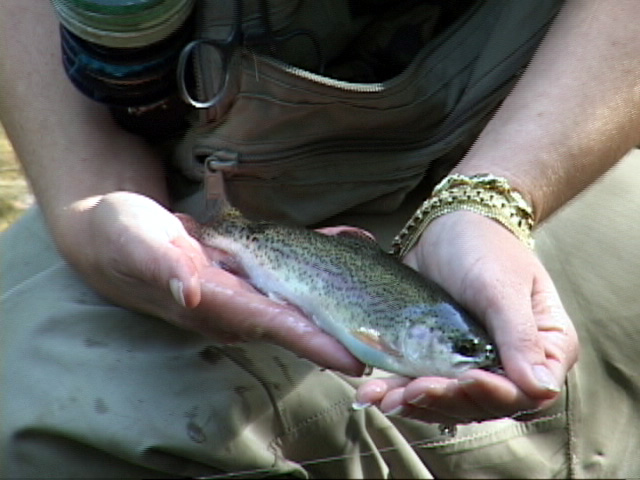
rainbow trout in its waters as
you can see. This one put up
a very good fight for Angie. It’s
a very healthy rainbow.
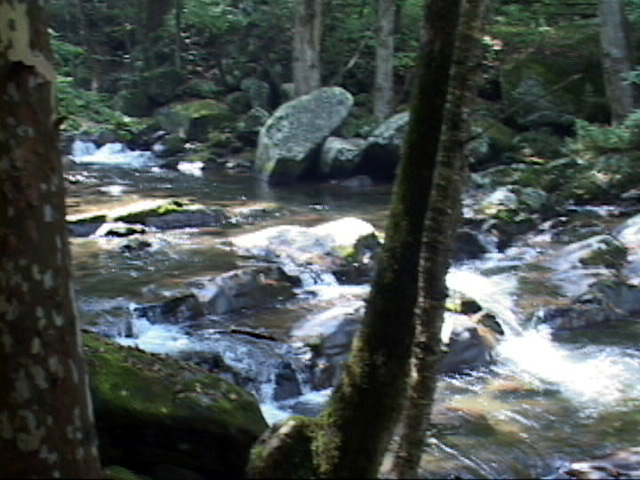
for Big Creek. Navigating its
rough waters can be a chore. In
some places it’s almost
impossible to wade upstream.
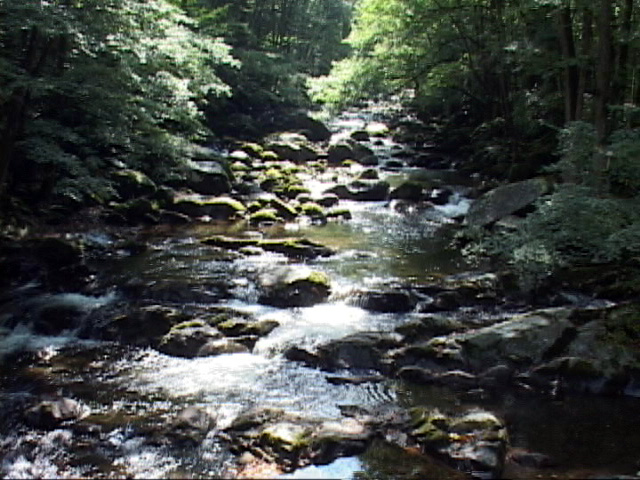
and lots of it. Anglers have a
lot of challenges to overcome
with the conflicting currents
as well as moving around in
the stream.
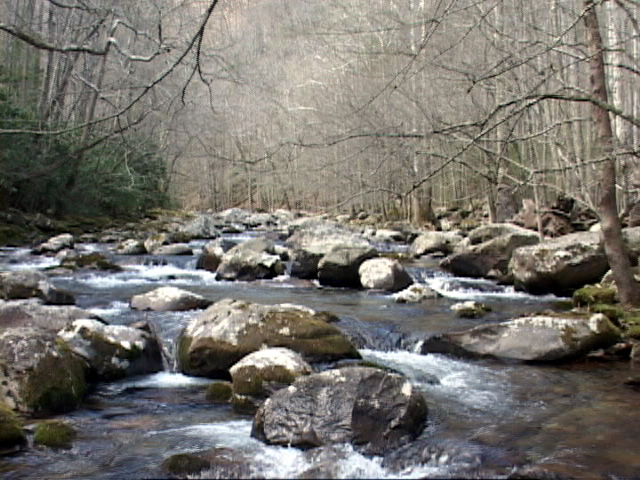
this scene but I doubt it could
hold any more boulders.
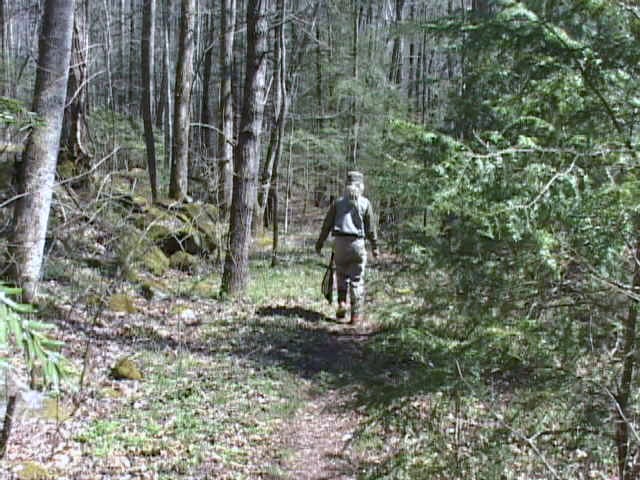
you along the stream above
the campground for a few
miles.
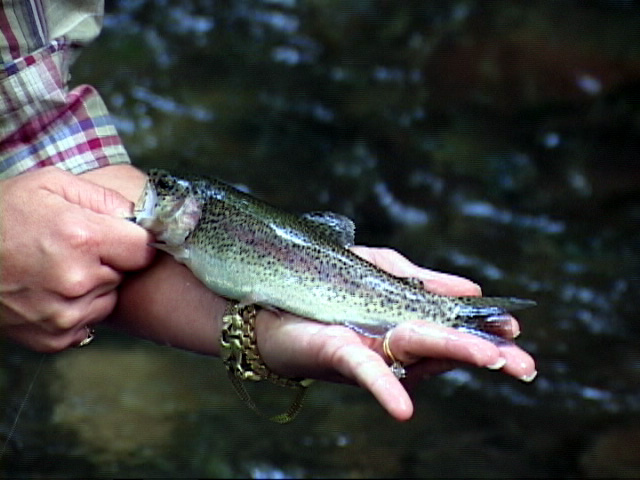
over twenty-five this particular
day, all rainbows. Not far
upstream from the campground
you will begin to run into some
brook trout. In addition to those
in the main upper part of the
stream, there are plenty in the
tributaries.
Description:
Big Creek is a steep, high gradient stream with lots of rough and tumble pocket water. It’s about as difficult to negotiate as any stream in the Great Smoky Mountains National Park that is fairly easy to access. Big Creek is located in the North section of the park. The stream flows into the Pigeon River just outside the park.
Stream Size:
The size of this stream ranges from medium to large as compared to other streams in the park. We would class it as a large size Great Smoky Mountains National Park stream.
Accessibility:
The lower portion of Big Creek runs through a campground and is easy to access. Above the campground it’s mostly difficult to access the stream from the main trail. The trail lies far above the stream and traveling upstream in the stream bed is tough to impossible in places. Large deep pools, huge boulders and fast water makes it difficult to follow the stream bed. The stream can be followed from angler made trails from the campground leading upstream.
Species:
Rainbow trout dominate the trout species list for most of Big Creek. Brook trout are found in the uppermost portions of the stream.
Average Fish Size:
The average size of the stream’s rainbow trout is probably slightly less than the average size for the park. They seem to range from 5 to 8 inches. An occasional larger rainbow trout may be found.
Popularity:
The best part of this stream may be its low popularity as a trout stream. It’s not because fishing isn’t good. It’s because the stream is located in a remote area of the park although access to Interstate #40 is only a reasonable distance away.
Difficulty:
As we said, getting around in the stream is very difficult. Catching trout is no more difficult than it is anywhere else in the park and may even be easier because the stream sees little pressure from anglers.
Tributary Streams:
Big Creek is made up of several tributary streams. Since they begin at high elevations, some of them are very good brook trout streams.
Gunter Creek:
Gunter Creek is a small tributary stream of Big Creek. Rainbows and brook trout can be found in the lower section of the stream. Brook trout will be the only species found in the uppermost parts of the stream. It flows into Big Creek about six miles upstream of the campground. Gunter Fork Trail follows the stream.
Mouse Creek:
Mouse Creek is a very small tributary steam. Only a mile or so of this stream is fishable. The portion above Mouse Falls isn’t worth fishing. There is no formal trail to follow.
Swallow Fork:
Swallow Fork is one of the major tributary streams to Big Creek. It can be accessed from the Swallow Fork Trail that intersects the Big Creek Trail about five miles upstream of the campground. The trail follows the stream for about two miles. Swallow Fork has both rainbow and brook trout.
McGinty Creek:
McGinty Creek is a very small stream that flows into Swallow Fork. It has a population of brook trout.
John Mack Creek:
John Mack Creek is another very small tributary of the Swallow Fork.
Yellow Creek:
Yellow Creek is a very small stream that enter Big Creek about nine miles upstream of the Big Creek Campground. It can be accessed from the Yellow Creek Trail. Brook trout are the main attraction of this small stream.
Deer Creek:
Deer Creek is another very small tributary stream of Big Creek that has a population of brook trout. It enters Big Creek about a half mile above the Yellow Creek junction. It has no formal trail that follows it.
Comments:
This stream is a good one to fish if you just want to say that you have fished all of the major streams in the park, or if you just want to get away from it all and fish some of the small brook trout tributaries.
Copyright 2011 James Marsh
